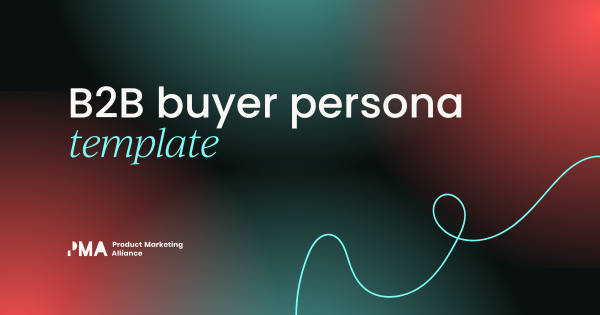As I apply to product marketing roles, I’ve come across a few companies that talk about ‘first principles.’ First principles is a problem-solving method that lets you break down complex issues into fundamental parts.
You may know some companies that adhere to this concept like Tesla, SpaceX, Amazon, Apple, and more. After repeatedly coming across this term, I decided to delve into first principles and specifically look more deeply at marketing first principles.
Dave Kellogg, a marketing leader, has an interesting blog post on his take on marketing’s first principle: Marketing exists to make sales easier.
I love it because it’s so simple. Some marketers may argue with this saying that marketers don’t ‘report’ to sales but, to me, this makes sense. My job as a marketer is to help sales sell the product. If sales doesn’t sell the product, everyone in the company loses.
So, how can marketers help sales?
One of the easiest ways is to enable them with collateral.
What is collateral and why is it important?
Collateral is marketing material (either digital or printed) that promotes a company’s brand, products, or services. Collateral can inform and educate buyers, support sales, help progress deals, etc.
However, not all collateral is the same. Collateral can be a blog, one-pager, a flier, or even a presentation. In order to really help sales and convert a lead to a customer, you have to understand where assets and collateral fit in the buyer's journey.
Let’s take a look at the buyer’s journey…
Understanding the buyer's journey
A buyer’s journey is the process a customer goes through to purchase a product or service. This depends on who the buyer is and the product or service. A B2B purchase is more complicated and might involve more people than a B2C purchase.
To illustrate, let’s consider the classic B2B buyer’s journey with three steps: awareness, consideration, and decision.
Awareness stage
At this stage, prospects know they have a problem and are actively looking for a solution. They may turn to Google or social media for answers.
As a product marketer, you need to think of the types of questions your prospects are asking and where they are going to find that information. Are they in a specific Slack community or internet forum? Do they attend specific conferences and events? Where do they live online?
Typical collateral for this stage could be an educational blog post. A blog post shouldn’t be a sales pitch where you’re talking about your product, but rather an informative article that helps the buyer clarify the problem they are facing and introduces potential solutions to that problem.
Below are some examples of these kinds of blog posts:
- Tray.io’s “iPaaS vs RPA: What’s the difference?”
- Hightouch’s “What is a Customer Data Platform (CDP)? The Complete Guide”
- RudderStack’s “What is Data Activation?”
The objective of this collateral is to educate an audience on a problem or challenge they face, and a potential solution to the problem.
If the prospect is ready to take the next step (which by the way, isn’t always the case), they will try out the product or service or schedule a call to learn more and see if it can be a potential solution to their problem. At that point, we can move on to the next step in the buyer’s journey.
Consideration stage
In the consideration stage, the prospect is already thinking about your product. They’ve done their research, talked to colleagues and might even be trying out the product (if there is a free trial or free version).
Think about the buyer and what they need at this point in their journey. The best collateral is not an educational blog post. They’re past that stage. They know what the problem is and are already scoping out your product (among others) to see if it might help. They need something that will help build confidence around your product since they will likely need to pitch this internally.
Case studies are one way to build credibility and trust in your product. It helps your champion learn how this product has helped other customers.
A compelling case study will be from a recognizable company (or a company in the same industry), with tangible proof of results (ideally ROI or some form of a return), e.g. a 300% increase in ROAS (return-on-ad-spend). Some case studies are accompanied by a video showing a customer using the tool and the value it provides to their team.
Below are some examples:
- LATAM Airlines achieves 90% employee satisfaction with Zendesk
- How Domino’s decreased cost per acquisition by 65% with Twilio Segment
- How Deel Scaled Their Team from 75 to 2k+ Employees in 3 Years with Ashby
Decision stage
The last stage in the journey is the decision stage. Sales is in the final sprint to having a deal close. The sales team has convinced the champion of the value. However, a B2B buying decision usually involves other stakeholders.
After all, a purchase could be in the hundreds of thousands of dollars a year. The account executive’s job is to help their champion sell your product internally. You need to understand what flags or obstacles could block this decision.
At RudderStack, one of the main reasons for a prospect not to buy was the resources and time it would take to migrate from their current Customer Data Platform (CDP). This would involve engineering resources, several months of work, plus the additional time and effort to learn how to use this new tool.
For some people, it was too much.
Even when the legacy product was more expensive, they preferred to stick with what they knew.
We realized we needed to create collateral to assuage buyers’ fears of migrating to a new tool.
I created a few slides on how easy it was to migrate to RudderStack. We wanted to show that migrating to RudderStack could be done in a matter of weeks and with only limited engineering resources. The slides were used in the presentation that AEs showed the champion plus other stakeholders involved in the decision.
That asset worked. The fear of migrating to a new tool helped them understand the resources and steps needed for a seamless transition. It addressed apprehensions expressed by other stakeholders and ultimately helped convince some prospects to sign a contract with RudderStack.
The collateral for this stage is not as readily available as a blog post or even a case study.
It’s important to understand the obstacles and any flags that could block a deal and think of ways to minimize those risks. Other types of collateral include an ROI calculator and detailed comparison guides.

Final thoughts
Collateral could come in different formats. It’s not always a blog post or a one-pager. In order to have collateral that helps your sales team sell, you need to understand where collateral fits in the buyer’s journey. Look at your conversion rates and your funnel. Talk to the sales team and understand where the gaps are.
Once you start creating collateral and tracking the effectiveness of these assets, you’ll start to build a good relationship with sales and help make sales easier.
Ready to start creating collateral for your sales team?
Check out these other useful blog posts from PMA:





















 Follow us on LinkedIn
Follow us on LinkedIn




.svg?v=85af970283)